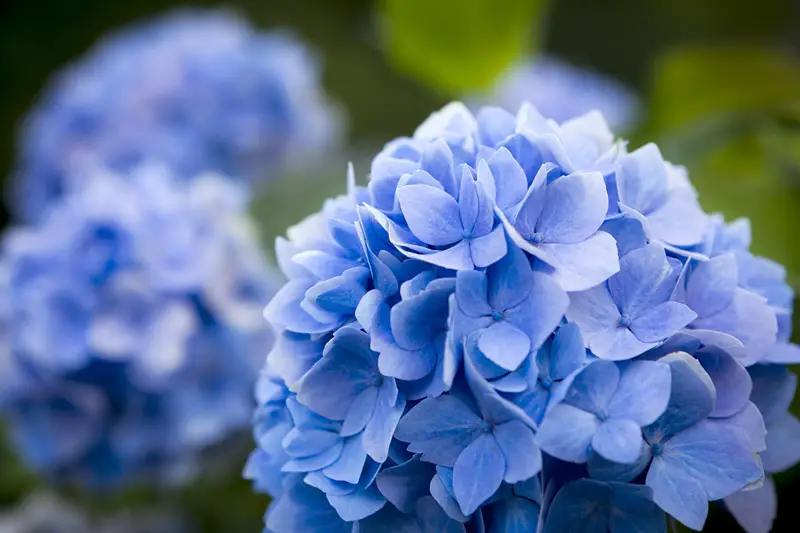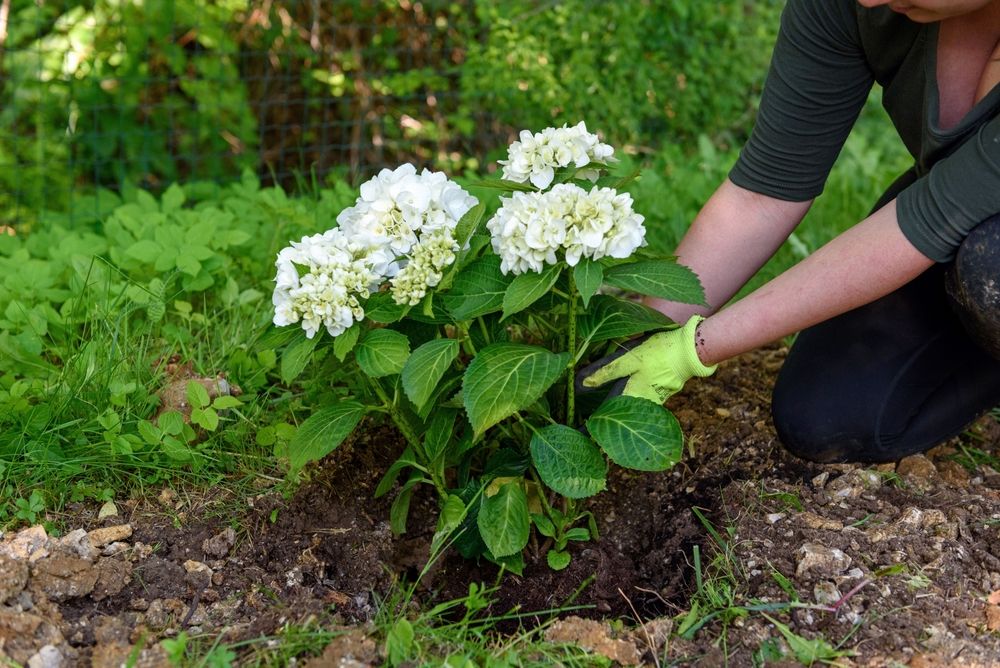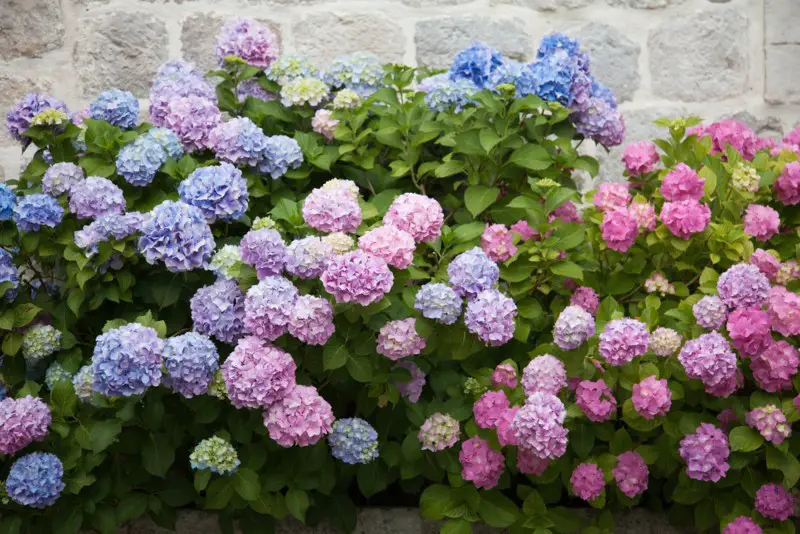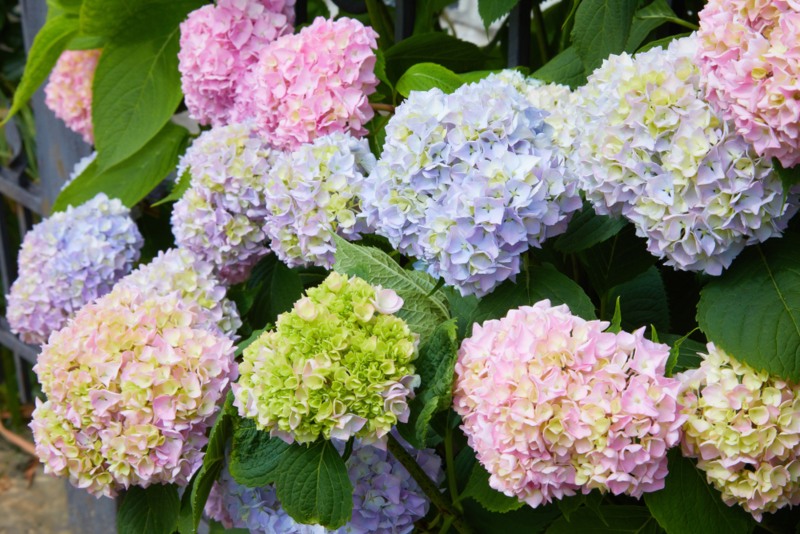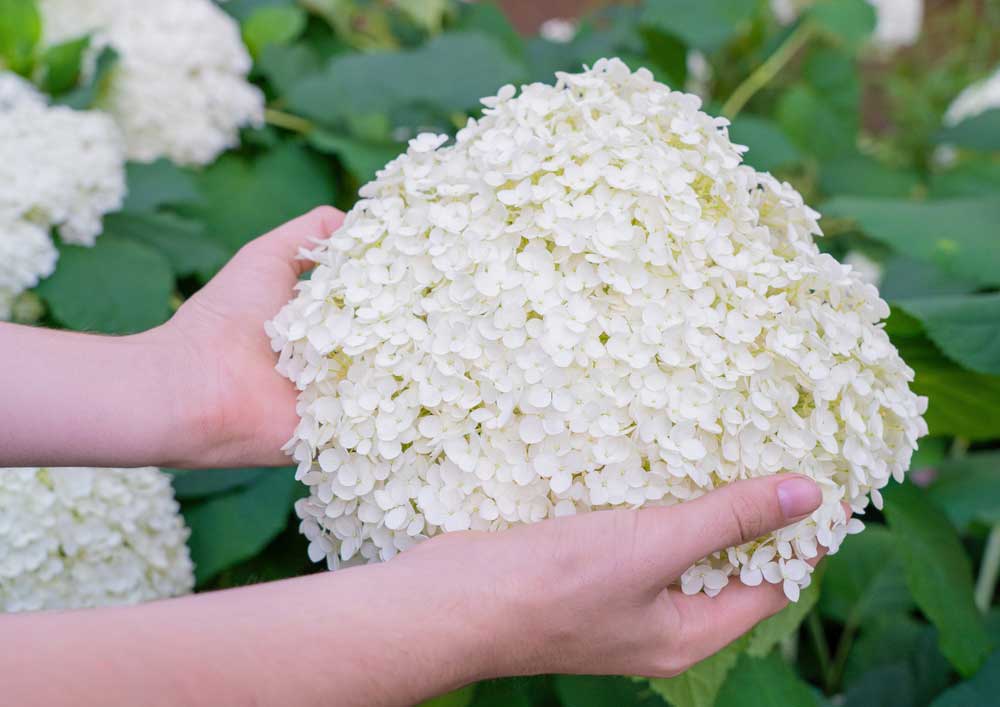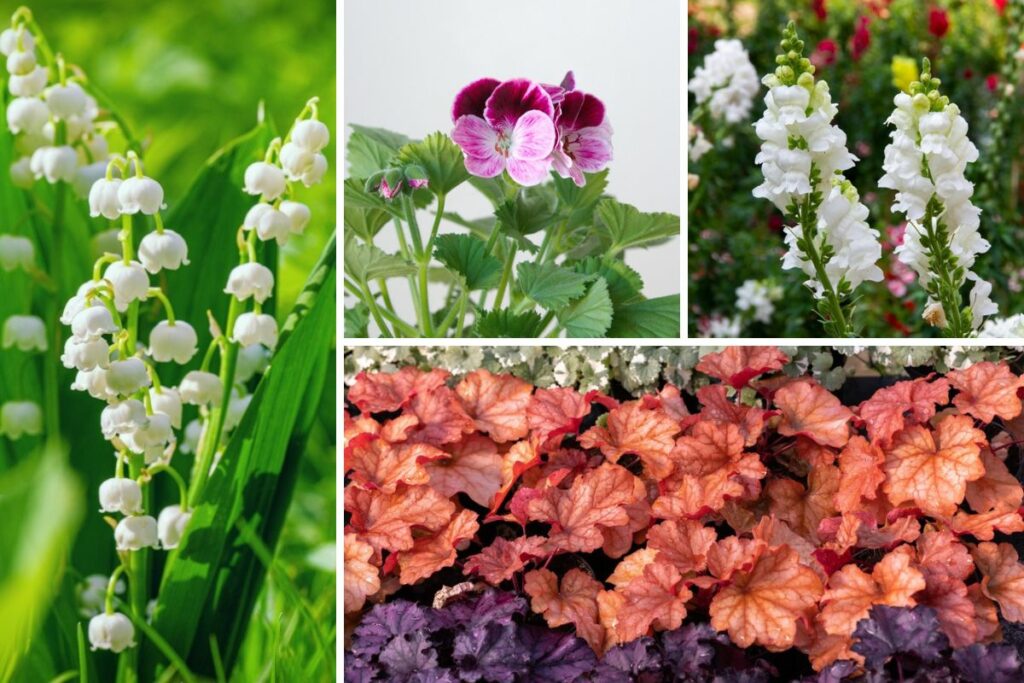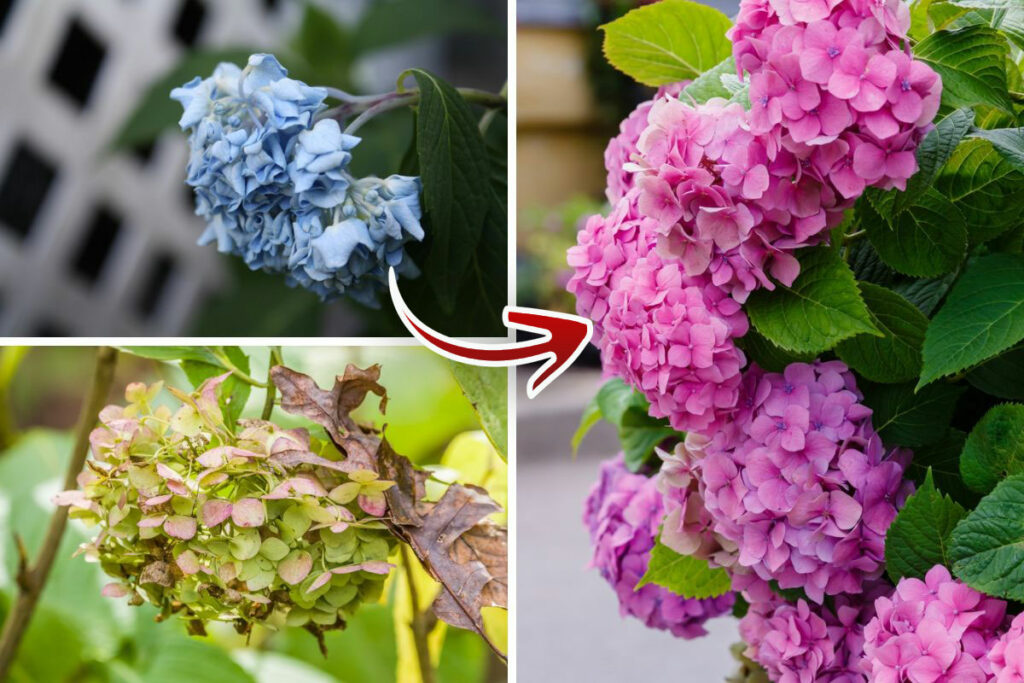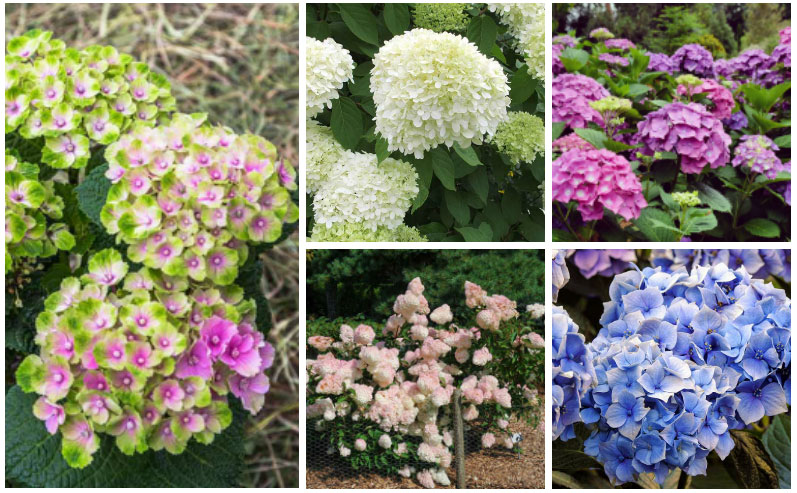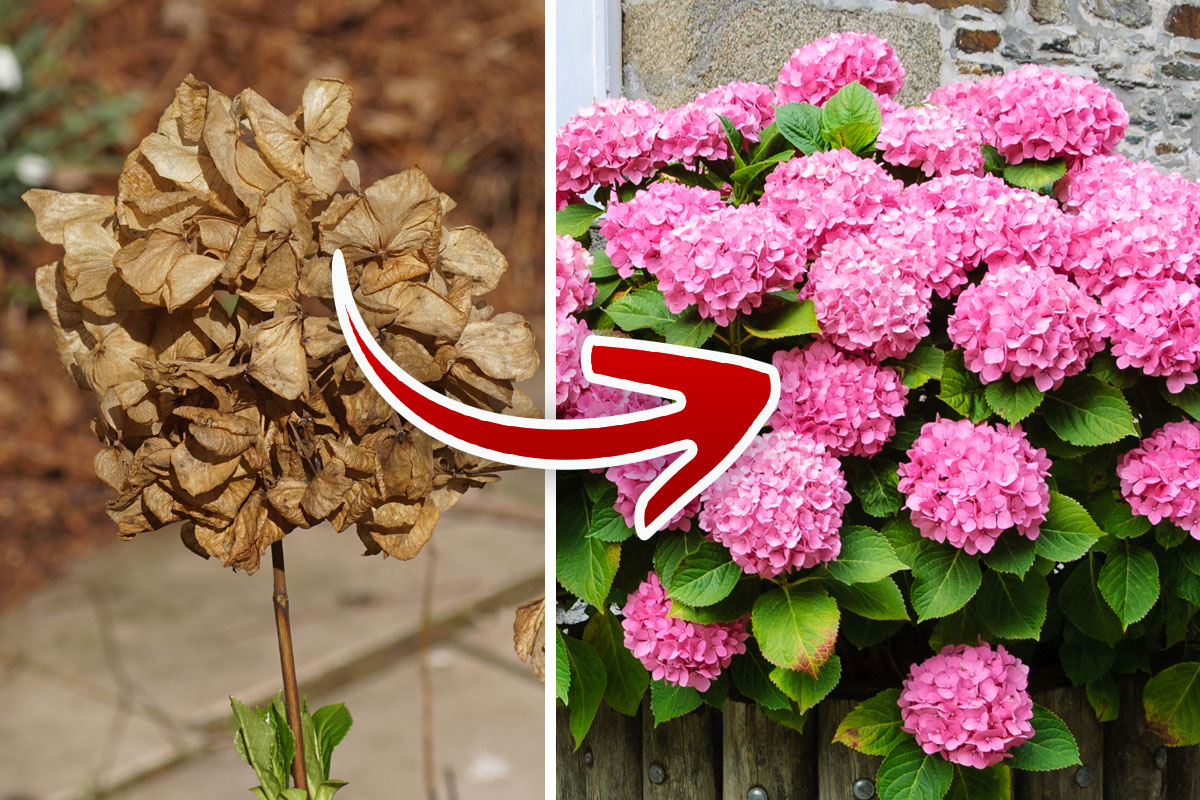
Hydrangeas are stunning shrubs with large flower-heads that bring a timeless, cottage-feel to any home. While this shrub also produces large, leafy foliage, it’s the plant’s flowers that most people desire.
So it is only natural to be concerned when your hydrangea isn’t producing those desirable blooms.
Thankfully, there are a few tips you can do to help encourage your plant to produce blooms all season long.
Prune Properly
Pruning can be your best friend or worse nightmare when it comes to blooming. After all, it has long been known that hydrangeas bloom on old wood (last years growth). But do they really only bloom on old wood? If only it was that simple.
While it is true that some hydrangea varieties bloom on old wood, there are others that bloom on new wood, and then even some varieties that bloom on both old and new wood!
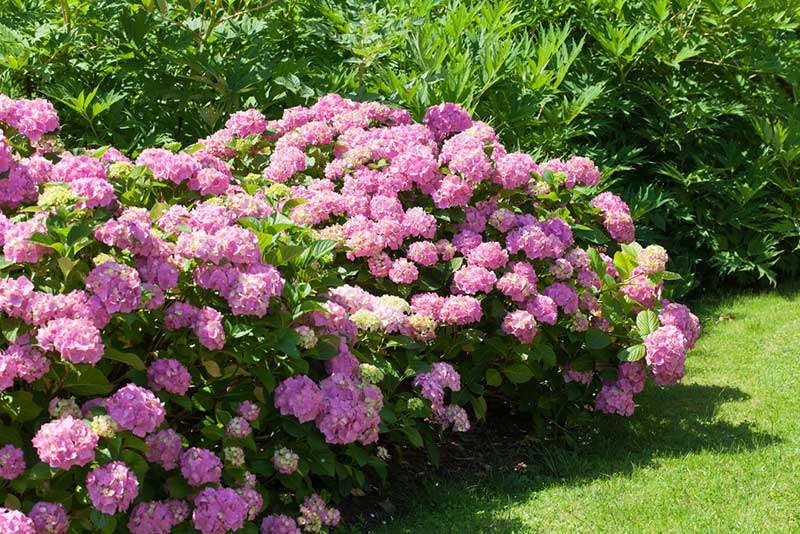
Bigleaf hydrangeas bloom on old wood, so they need to be pruned in late summer once blooms are spent.
Panicle hydrangeas, on the other hand, bloom on new wood, and can be cut back in winter or early spring before new growth occurs.
‘Endless Summer’ hydrangeas make things even more complicated by blooming on both old and new wood.
In order to ensure you are pruning the plant properly, determine what type of hydrangea you have and then follow the recommended pruning guidelines for that specific variety.
Give Them Sun, But Not Too Much
Hydrangeas can be picky plants that need sunlight, but can also wilt under those hot rays. This is complicated even more by the fact that, in cooler climates, hydrangeas can actually tolerate full sun without any problems.
Most gardeners will find that planting hydranges in an area where they get a mixture of both direct and filtered sunlight provides them with the best results for not only blooms, but healthy growth as well.
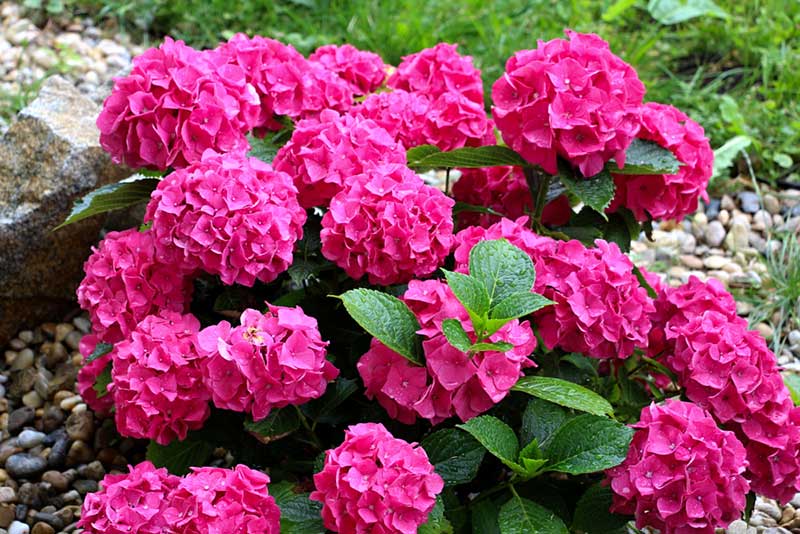
Feed to Increase Blooms
Hydrangeas thrive when fed a balanced fertilizer of 10-10-10. If, however, you want to increase the amount of blooms your plant produces, use a fertilizer that has a higher phosphorus amount, such as 10-20-10. Make sure to follow the application instructions printed on the fertilizer bottle.
Most fertilizers recommend applying in mid to late spring, and then reapplying per the manufacturer’s instructions listed on the bottle.
Remove Spent Flowers
Spent blooms are a big waste of the plant’s resources that the hydrangea could use to create more and even larger blooms.
They also take up space, which prevents the hydrangea from producing a new flowerhead in the dead flower’s place.
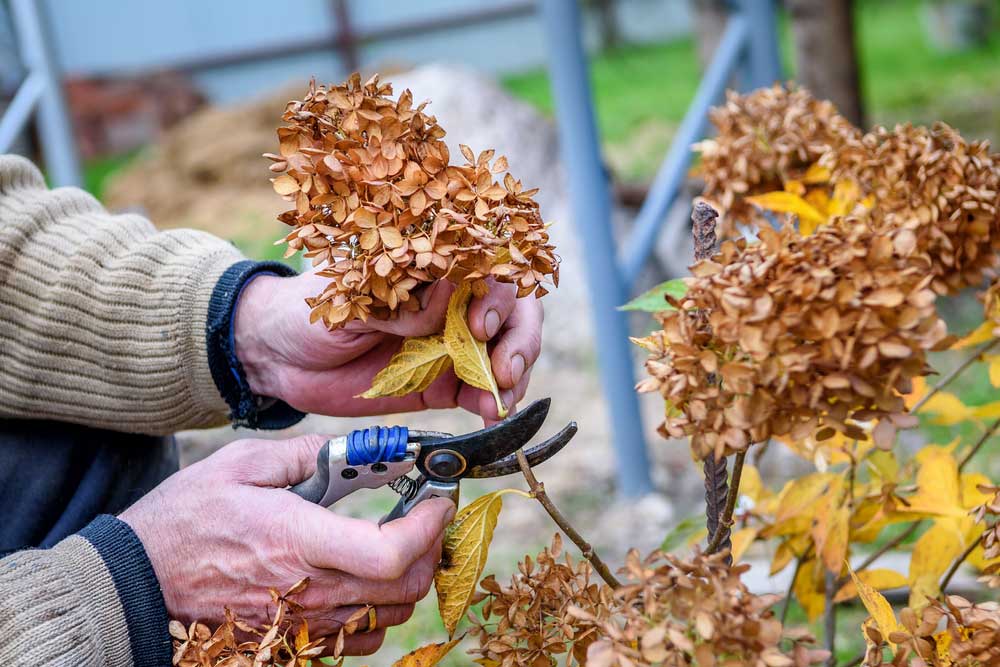
Once the bloom starts to fade, immediately remove it with a pair of clean, sharp pruning shears. This gives the plant ample space for new blooms to grow, as well as increases the hydrangea’s efficiency.
Don’t forget to also remove any deadwood that you may find as well.
Keep the Soil Moist
Hydrangeas thrive in moist soil, and keeping the soil around the plant constantly moist helps to encourage growth.
That doesn’t mean the soil should stay soggy, as this can actually cause problems. You will need to find a good balance so that the soil drains well but stays moist without being soggy.
One way to do this is to add mulch around the hydrangea. Mulch helps to keep moisture around the plant’s roots, while also helping to protect against extreme temperature fluctuations, which can kill the plant’s roots. If you experience periods of drought, you will need to water the plant deeply to ensure it gets enough water to keep it healthy.
A plant that is water-stressed won’t produce new blooms, and it can increase the chance of pest and disease problems.





